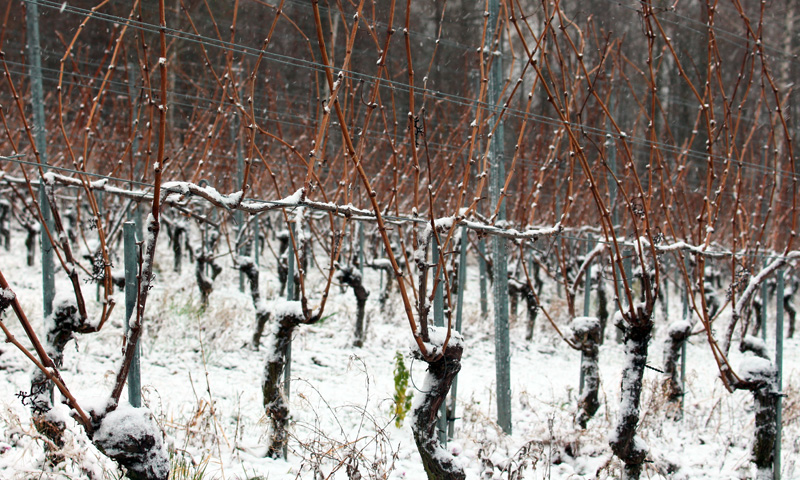The winemaker works with the seasons
The 4 Seasons
Winter
The season begins in mid January and ends in March.At that time, the vine is dormant and the sap is down.
Jean-Claude passes by each vine (about 60 000 in all) and cuts off the old shoots making room for new growth.
During the month of March, the winemaker maintains the poles, and frames, and tightens the wires.
The family tradition of « never cutting a vine twice in the same year », continues for nearly a hundred years
Spring
This is the ideal time to give nutrients to the vineyard. Soil analysis provides information about texture, nutrient content and organic matter content. From the results and the requirements of the chosen grape variety, we determine the quantities of fertilizers for the vineyard.
In spring, the soil warms up and the sap rises in the vine. It’s said « the vine is crying » because water droplets bead up where the shoot has been cut.
In May and June , and Marius and Violeta suppress the surplus and weaker buds so an average of six to eight buds remain.
In late spring, the flowers appear and the fruit sets; in other words, the flower turns into a fruit. At this time, it is already possible to predict a harvest date since it takes approximately 100 days for the grapes to mature


Summer
Several activities punctuate this season: polishing (putting the wood in the wires), shearing and cutting grass. It is the busiest time of the year for the whole family.
To fight against certain parasites we use organic methods, always with a respect for nature:
Fighting against grapeworms consists in placing in the vineyard diffusers with female odors. Male moths attracted by the smell of the hormones are no longer able to locate females and mating cannot take place. It is called sexual confusion.

Autumn
Usually at the end of September harvesting begins for about a three week week period.
Before the grape harvest we measure the grapes sugar content using a refractometer. This is « the survey ». At the Domain, the grapes are harvested 90% by hand, the remainder being harvested mechanically.
The harvested grapes are then de-stemmed, pressed, filtered and fermented in tanks. At this time that the winemaker turns to winemaking which a set of operations that transform grapes into wine.